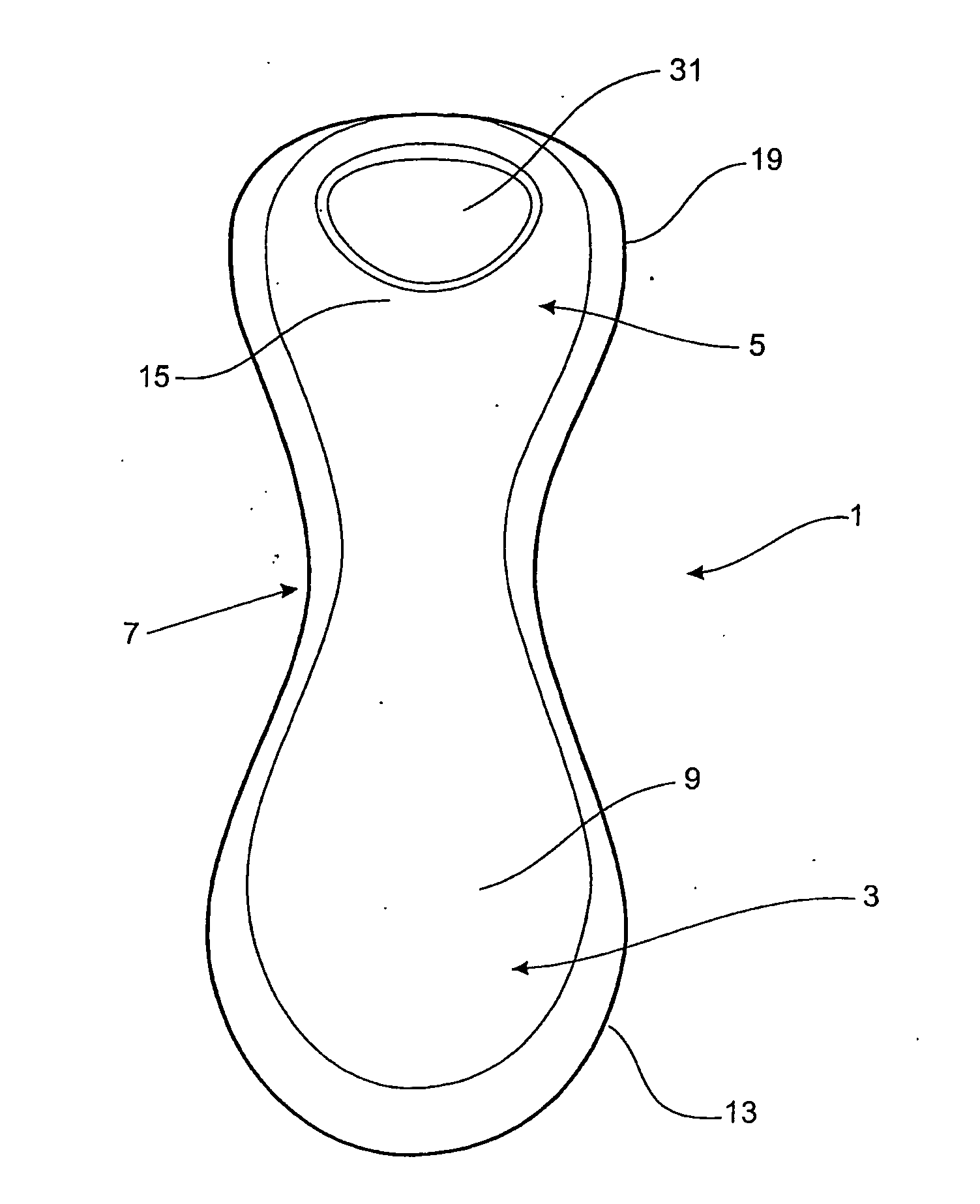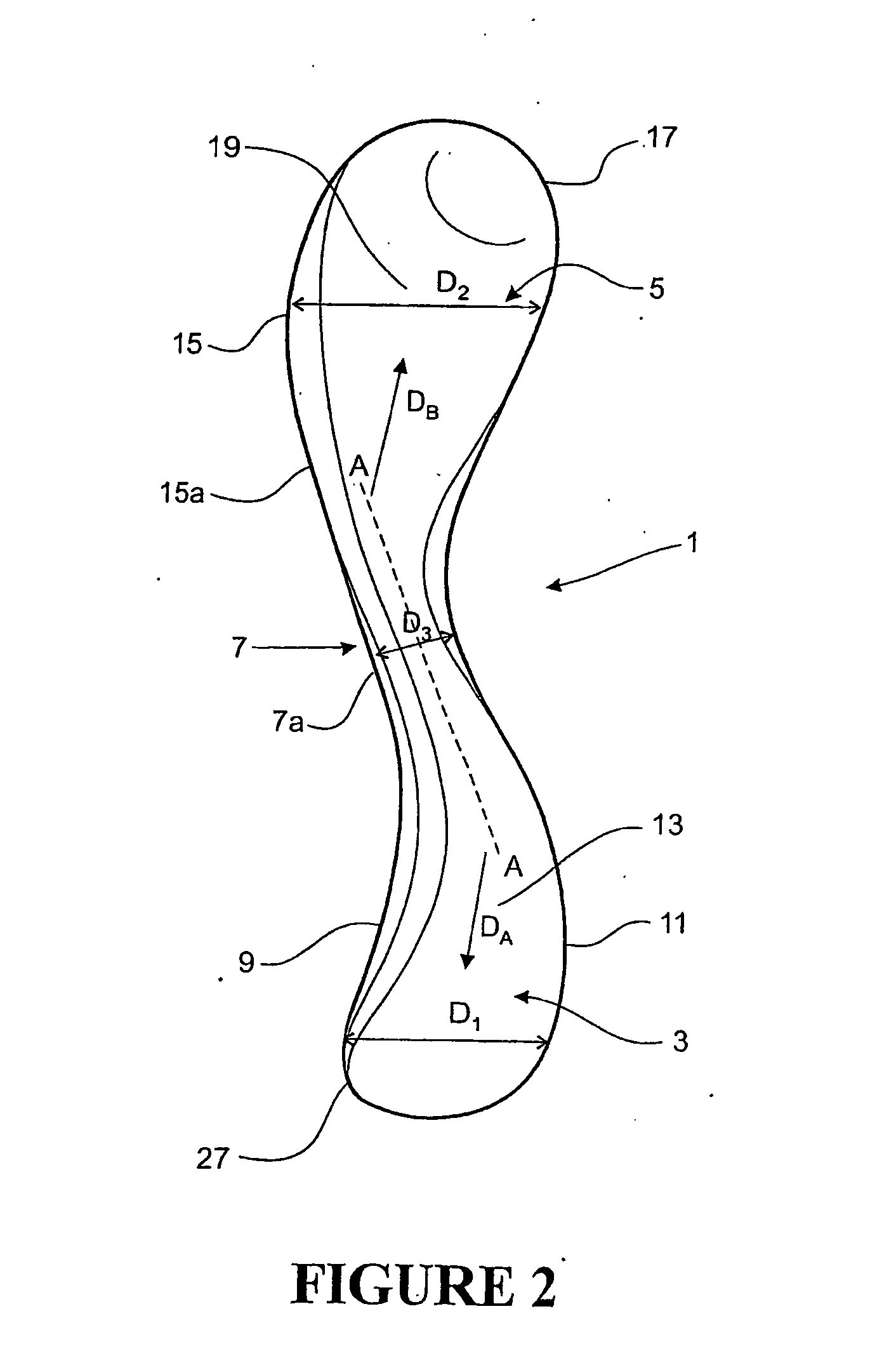Device for exercising or supporting the pelvic floor muscles
- Summary
- Abstract
- Description
- Claims
- Application Information
AI Technical Summary
Benefits of technology
Problems solved by technology
Method used
Image
Examples
example 1
Method of Exercising Pelvic Floor Muscles
[0160](a) insert the device of the invention comfortably so it is just inside the vagina,[0161](b) place your hands on your lower abdomen (tummy) as if placing them in front pockets to feel the movement of your inner muscles,[0162](c) brace your tummy muscles[0163](d) breathe in and out to the base of the lungs[0164](e) contract your pelvic floor muscles against the device and hold[0165](f) release all muscles and relax.
[0166]Steps (a) to (e) constitute one cycle.
[0167]10 cycles should be performed every second day for 12 weeks.
[0168]Exercisers should aim to be able to do 10-12 cycles in a row, holding each squeeze for 6-8 seconds. Exercisers should also aim to do 3 sets of 10-12 cycles each day. In addition, exercisers can perform a further set of 10-12 cycles of steps (d) to (f) without performing step (c) first.
PUM
 Login to View More
Login to View More Abstract
Description
Claims
Application Information
 Login to View More
Login to View More - R&D
- Intellectual Property
- Life Sciences
- Materials
- Tech Scout
- Unparalleled Data Quality
- Higher Quality Content
- 60% Fewer Hallucinations
Browse by: Latest US Patents, China's latest patents, Technical Efficacy Thesaurus, Application Domain, Technology Topic, Popular Technical Reports.
© 2025 PatSnap. All rights reserved.Legal|Privacy policy|Modern Slavery Act Transparency Statement|Sitemap|About US| Contact US: help@patsnap.com



